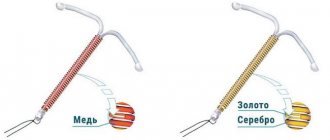How long is the duration
The menstrual cycle does not resume while the woman’s body continues to actively produce prolactin, that is, throughout full breastfeeding.
Typically, the duration of amenorrhea is six to nine months. By this age of the baby, one of the feedings is replaced with complementary foods. In this case, regular breastfeeding is disrupted. In more rare cases, the condition lasts up to one and a half years. Normally, the maximum limit of amenorrhea can be 2 years if lactation continues throughout this time. However, in this case, it is recommended to consult a gynecologist; it is possible that there is a need to undergo some examinations.
If the state of amenorrhea is prolonged, it is necessary to undergo a comprehensive examination
Duration of the phenomenon
The absence of menstruation in the postpartum period can last from six months to 12 months or more. According to statistics, the menstrual cycle should be fully restored 8 months after childbirth. With irregular breastfeeding or its absence at night, the production of prolactin decreases, ovulation quickly resumes, which can lead to another pregnancy. However, the duration of amenorrhea varies for each woman. It all depends on the individual characteristics of the body and on the hormonal background.
MLA principles
The principle of action of MLA is due to the natural biological mechanism of protecting offspring from lack of food. The mother must feed the baby with milk until his teeth are formed. Then he can eat other foods. From this moment on, the woman’s reproductive system restarts.
With lactational amenorrhea, a woman in labor must follow three main rules that will ensure stable production of prolactin, as a result, temporary inhibition of reproductive function:
- In the first minutes of a baby’s life, he should feel the mother’s warmth and be attached to the breast. For the next six months, it is important to ensure stable contact with the baby and feed him breast milk.
- Give up a strict regimen and feed the newborn on demand. During the day he will ask to eat every four hours, and at night two or three feedings are enough.
- Complementary foods should not be introduced until six months, so that the milk does not burn out. To ensure your newborn continues to stimulate the breast, avoid pacifiers and pacifiers.
- Even if the mother is ill, it is important to continue breastfeeding. The baby needs the antibodies contained in milk.
The lactational amenorrhea method is a beneficial solution for parents and baby. Constant tactile contact and the presence of antibodies in mother's milk provide lasting immunization. Babies get sick less often and develop faster.
Basic principles of the method
In order to be confident in the effectiveness of the method, a woman must follow certain rules. Lactational amenorrhea occurs in any case, but its duration and effectiveness depend on several factors. For this method of contraception to sufficiently protect a woman:
- After the baby is born, breastfeed as quickly as possible (optimally up to 30 minutes from the moment of birth);
- The woman should be with the baby the vast majority of the time;
- Feeding the baby should be done on demand, but at intervals of no more than 4 hours during the day and no more than 6 hours at night;
- The introduction of complementary foods (even drinks) should be carried out no earlier than 5–6 months;
- Even after six months, you can maintain relative amenorrhea if you start breastfeeding the child, and only then supplement the diet with complementary foods;
- In the event of any pathology in the mother or baby, feeding should be continued (however, this rule has exceptions when the mother must take potent drugs for treatment);
- Breastfeeding should only be done naturally (the use of bottles and the like is unacceptable, since the child refuses to breastfeed after them);
- A woman should carefully monitor her diet so that the child has enough nutrients for normal development without additional complementary foods.
Compliance with these rules will make contraception using the lactational amenorrhea method 97–98% effective.
It is important for a woman to remember that the health and well-being of her child comes first. The baby's individual characteristics may interfere with compliance with the above principles, for example, the baby requires earlier complementary feeding or does not wake up to feed at night. If the baby’s development is normal, then you should not force him to eat. It is better to abandon the lactational amenorrhea method, but keep the baby healthy.
Why is the cycle not restored after feeding?
For the first time, “critical days” can begin several months (2–3) after the birth of the child. This occurs when the following factors are present:
- using a pacifier between feedings;
- artificial feeding;
- complementary feeding with mixture;
- periodic “topping up” with water from a bottle;
- breastfeeding at long intervals (more than three hours).
You need to know that there are women with a high propensity to give birth to offspring (in medicine the term is called high fertility). Their period of lactational amenorrhea may be completely absent. In this situation, it does not matter how many times you put the baby to the breast.
At the end of the period, the level of prolactin in the female body drops. At the same time, other hormones begin to be produced, thanks to which the ovarian follicles mature. Then the menstrual cycle is restored within a month or two.
If your period does not start after you stop breastfeeding, it may be due to a hormonal imbalance.
If this does not happen, then this may indicate a hormonal imbalance. This condition can be easily cured with hormone therapy. It is not recommended to use any medications of this type on your own, as this can lead to bad consequences. Medicines should be prescribed by a gynecologist after conducting a series of studies (blood test, ultrasound).
Lactational aminorrhea has been recognized as a contraceptive method relatively recently (since 1988, when its effectiveness was proven). Now this feature of the female body (cessation of ovulation) is used for birth planning. However, doctors do not consider this method of contraception to be absolutely reliable. They often recommend using this method in conjunction with others that are approved and safe during lactation.
When taking contraceptives, milk may leak from the breasts
They usually begin to be used two months after birth. This could be an intrauterine device, condoms or caps. You need to know that oral contraceptives cannot be taken during this period. They can cause galactorrhea syndrome (unreasonable release of milk and colostrum from the breast). However, if a woman for some reason cannot use other contraceptives, then amenorrhea is the only solution that will help prevent pregnancy.
After all, what is required in practice for an excess supply of prolactin into the blood to protect a woman from re-pregnancy even at the stage of breastfeeding the baby? When all resources are thrown into restoring health after 9 months of continuous stress, and even with the full-scale task of preserving the life and health of the mother-baby continuation?
- Already in the first 30 minutes after labor is completed, allow the woman to put the baby to her breast. The endocrine system will perceive this as a signal to activate, and the first drops of colostrum that the child tastes will serve as a powerful remedy for possible diathesis.
- Feed your baby at his first request! No feeding “regimes” are justified; breastfeeding intervals should not be more than 4 hours during the day, this is already a critical period. At night, the maximum interval between feedings is no more than 6 hours. (In practice, it is never aged; much less time passes between feedings). With sufficient lactation, you need to categorically throw out the slightest thought about complementary feeding from your head: milk contains enough liquid to quench your thirst and nutrients for complete saturation.
- Do not use pacifiers or pacifiers. In addition to unjustified breastfeeding, the child will also develop an incorrect bite.
- If the mother or child is sick, breastfeeding should also not be given up! No bacteria or viruses will be stronger than the immunological barrier created by the substances contained in mother's breast milk.
- Find all opportunities for complete and balanced nutrition for the mother. The quality of the products must also be appropriate.
Only if at least five of these conditions are met can we talk about a 98% guarantee that pregnancy will not occur during the lactation period. The missing 2% falls on accidents that are inevitable in real life, such as conflict in the family, on the street or in a store. They could simply yell at a woman with a baby, which would upset her to the point of tears or even depression. Or scare you with a dog suddenly jumping out from around the corner. Or a car with an inadequate driver speeding dangerously close.
She may eat something inappropriate, causing a severe allergy or even poisoning. All these things can cause a malfunction in milk production. And when it is restored, fatal disturbances will occur in the well-functioning mechanism of action on the mammary glands and the uterus with its ability to conceive, and these 2% will work as the very mechanism of contraceptive failure.
With lactational amenorrhea, there is a possibility of fertilization, even if menstruation is absent. Restoration of reproductive function in some women in labor is possible immediately after childbirth.
Lactational amenorrhea is successfully used by women in labor:
- breastfeeding a newborn only;
- have never menstruated since giving birth;
- who gave birth less than six months ago.
Women who should not use amenorrhea:
- with a resumed menstrual cycle;
- adhering to mixed or artificial feeding;
- with children over six months old.
It is undesirable to rely solely on amenorrhea for protection from unwanted fertilization. It is very difficult to track hormonal processes in the body. Ovulation can occur at any time, and the woman will not even know about it.
Lactational amenorrhea protects against unwanted pregnancy, but it is unlikely to prevent infection with sexually transmitted infections. If possible, continue feeding.
If you or your partner are at risk of contracting an STD, you should use condoms along with MLA.
Now we are not talking about adultery or trust in a partner. There are chronic diseases of the reproductive system that can be picked up when visiting a public toilet, swimming pool, or at the dentist's office. Parents need to take care of the child's health. His life is more important than carnal pleasures without special protection.
If you skip nighttime breastfeedings or switch your baby to bottle feeding, contact your doctor who can help you choose the appropriate contraceptive and teach you how to use it correctly.
Lactational amenorrhea methods are a natural method of contraception in the postpartum period, subject to certain feeding conditions. Since ancient times, people have known about its existence, but they began to officially use it only in the early 80s, provided that all requirements for breastfeeding were met.
Contraception using the lactational amenorrhea method requires compliance with basic criteria such as: absence of menstruation, only breastfeeding before the introduction of complementary foods and, accordingly, a period of up to six months. If one of the criteria cannot be maintained, then this method does not work as contraception and it is worth using other means of protection against pregnancy.
The lactational amenorrhea method is a truly valid method of natural contraception if the woman fulfills all of the following factors. These include:
- after birth, early breastfeeding is necessary, but no later than two hours
- mother and child staying together to spend more time and get positive emotions from childbirth
- feeding on demand, which means not exceeding the duration of the periods between feedings more than three hours, and at night no more than six hours
- Complementary foods should be introduced no earlier than six months
- feeding should be from the breast, not expressed milk, as the sucking reflex stimulates the production of prolactin
If all these requirements are met, this method has a positive result in 98% of cases, since none of the methods provides 100% protection against pregnancy, with the exception of only sterilization.
Lactational amenorrhea method - the mechanism of action is based on the production of prolactin by the anterior pituitary gland. With its overproduction, ovulation processes in the postpartum period are inhibited, which leads to the development of long-term amenorrhea and the absence of cyclic changes in the woman’s reproductive organs - the ovaries and uterus.
The amount of prolactin directly depends on the child’s feeding, its frequency and how it occurs. It is known that during sucking of the glands, the nerve endings of the nipples are stimulated and contribute to the production of the hormone by the pituitary gland. This happens most at night, hence night feeding is a prerequisite for this method to work.
If the intervals between feedings exceed the norm, then the concentration of prolactin decreases sharply, which leads to the restoration of ovulation and the likelihood of becoming pregnant increases. Therefore, when menstruation appears, it is worth using additional methods of contraception, since MLA becomes ineffective. Sometimes ovulation occurs even before the onset of menstruation, but all the above conditions were not met correctly and regularly.
The advantages of the lactational amenorrhea method are based not only as a contraceptive method, but also as a method that provides the child with passive immunity, in which protective antibodies enter the child’s body from the mother with milk. When using it, the risk of contracting a child with infections when consuming other milk, water or baby food is eliminated.
As for the material side, it is completely accessible and does not require the expenditure of the family budget, is not subject to medical supervision and control of the body’s condition, promotes the rapid contraction of the uterus to normal size due to the baby’s breastfeeding, does not have any effect on sex and can be used immediately after childbirth, unlike other methods of contraception.
The necessary conditions
A prerequisite for compliance with this method of contraception is breastfeeding. Feeding must occur both during the day and at night. Large intervals can lead to a rapid restoration of the reproductive function of the body. You need to feed from both mammary glands, but in turn. If a woman begins menstruation, this is a serious reason to use additional methods of protection against the onset of a new pregnancy.
Mechanism of action
To protect yourself from pregnancy using lactational amenorrhea, you need to follow a few simple rules.
Feeding mode
You need to feed your baby as often as possible so that the nipples become irritated during sucking. The best option is to feed on demand. During the day, the baby can be applied every three hours, and at least twice at night. This regimen is beneficial for mothers of restless babies who constantly want to fiddle with their breasts.
Baby's age
The method of lactational amenorrhea can only be used in the first six months of the postpartum period. The introduction of complementary foods eliminates the baby's constant need to attach to the breast. Prolactin is produced less, hormonal levels normalize, and ovulation occurs.
No menstruation
Relying on the ability of the lactational amenorrhea method to replace standard protection is inappropriate when a woman begins to menstruate. The onset of menstruation indicates that ovulation has occurred, which means that reproductive function has already come into its own. The menstrual cycle may resume during lactation if prolactin is not produced in sufficient quantities.
Complementary feeding was not introduced
It happens that a woman in labor has too little milk and has to supplement the baby with formula. Or the newborn has grown up and is already trying his first complementary foods. The mixed form of feeding leads to a decrease in prolactin production. As a result, estrogens begin to be produced and ovulation occurs.
What is lactational amenorrhea
Amenorrhea is the absence of menstruation for several menstrual cycles in a row. Lactational amenorrhea is the absence of menstruation during lactation (breastfeeding). In the first half of the menstrual cycle in women, the follicle matures. When it bursts, an egg is released - ovulation occurs. And if fertilization does not occur during the movement of the egg through the fallopian tube, menstruation begins.
After the birth of the baby, the woman begins breastfeeding. When a baby suckles at the breast, a special hormone is produced - prolactin. It promotes the formation of a sufficient amount of milk and suppresses the synthesis of hormones responsible for the maturation of follicles. Follicles do not mature and eggs do not come out. No eggs - no ovulation. No ovulation - no menstruation.
Problems
There are restrictions for the lactational amenorrhea method, please note which conditions will be a contraindication:
- Taking psychotropic substances and metabolic disorders.
- The onset of menstruation, indicating the return of fertility.
- A newborn has difficulty latching during the day and sleeps at night.
- Switching to formula feeding.
- Introduction of complementary foods at the age of six months.
The short duration of lactational amenorrhea and its sudden end are the main disadvantage of this method. A woman in labor may not menstruate, but be ready for fertilization. Where is the main danger of canceling barrier protection?
Flaws
There are few disadvantages of lactational amenorrhea, but they are present and should be taken into account by a woman when choosing a method of contraception. The main negative aspects of the technique:
- Any violation of the rules of natural feeding immediately significantly reduces the effectiveness of protection;
- In some situations, it is not possible for a woman to feed her baby every 4 to 6 hours (for example, if she has to work and expressing milk in a bottle does not protect against pregnancy);
- Lactational amenorrhea lasts only 6 months; at the end of this period, the woman will have to look for a new means of protection against unwanted pregnancy;
- Lack of protection against HIV and other sexually transmitted infections (if there is at least some risk of contracting such a pathology, it is best to abstain from sex altogether, since the disease can be passed on to the child through mother's milk).
Many women complain about the low effectiveness of the lactational amenorrhea method. The problem is that this protection ceases to work in the following situations, which should be kept in mind:
- Resumption of menstruation (even if all feeding rules are perfectly followed - the appearance of discharge is a direct sign of the end of amenorrhea);
- The child has reached the age of more than six months;
- The intervals between feedings are lengthened (in this case, the ovaries have time to restore their function);
- Introduction of complementary foods (sometimes doctors advise starting to introduce them at 4 months, but the woman must remember that then lactational amenorrhea will stop).
Due to the fact that women do not pay attention to these nuances, the lactational amenorrhea method has acquired the reputation of being ineffective, although in fact it is one of the most effective.
Advantages and disadvantages of this method
The technique effectively prevents pregnancy in 98% of cases. However, feeding rules must be strictly followed. In addition, after the baby reaches six months, the effectiveness of this method of contraception decreases significantly. In this case, amenorrhea during lactation should not be trusted.
It is recommended to consult a gynecologist six months after giving birth. Discuss this method of contraception. Perhaps he will recommend another method - a more effective one.
Only a doctor should select contraceptives after stopping feeding
Advantages
- Available for every breastfeeding woman
- 98% effective
- The method of protection is available immediately after birth
- Health benefits for mother and child (scientifically proven)
- Does not require time or money
- Postpones the use of contraceptives for a while
- Prevention of anemia and osteoporosis in the mother; productively affects the growth, development and health of the baby.
Flaws
- Breastfeeding should occur on a schedule: during the daytime, feeding no later than every 4 hours; at night - no later than every 6 hours
- Lack of protection against infections (HPV and STDs)
- The time for using the method is limited to the short-term postpartum period.
Lactational amenorrhea as a method of preventing pregnancy is a very effective method and protects a woman by 98%. Suitable for nursing mothers who have not yet resorted to the first complementary feeding, who feed their children often and for a long time, and is used until the first menstruation occurs after childbirth.
If you want to continue using a natural method of contraception after lactational amenorrhea ends, we suggest considering the calendar method of birth control.
Differences between physiological and pathological amenorrhea
There are 2 main types of amenorrhea - pathological and physiological.
The physiological form can be divided into true and false amenorrhea. With false ovulation, ovulation may occur, but menstruation is absent. Hormonal levels are usually not disturbed.
The main causes of development: vaginal anomalies, atypical structure of the cervix, mechanical obstacles. The true form is characterized by the absence of both ovulation and menstruation. It can be caused by: childhood, menopause, pregnancy, lactation.
Pathological amenorrhea is caused by certain defects in the development of the genital organs when they have been surgically removed. These include: removal of the ovaries, aplasia and expiration of the uterus. The pathological form is also divided into 2 types: primary and secondary.
Primary occurs in girls who do not menstruate before the age of 16. Secondary is characterized by the absence of menstruation for six months or more. The cause may be: infectious diseases, starvation, mental disorders, chronic diseases.
Efficiency
The lactational amenorrhea method shows effectiveness exclusively during the period of active lactation. When the baby is properly attached to the breast, contraceptive reliability is close to 98%.
The following rules will help ensure the functionality of the method:
- Purely natural breastfeeding is practiced without mixtures or supplementary feeding.
- The baby eats six times during the day and twice at night; more often it is possible, less often it is not possible.
- The woman in labor has not yet menstruated.
- The baby was less than six months old.
The main sign of the ineffectiveness of the method is the resumption of menstruation. Menstruation means the start of childbearing function, so start protecting yourself in time using any acceptable method of protection.
How to distinguish amenorrhea from pregnancy
During the period of amenorrhea, there remains (albeit a small) chance of pregnancy. You need to know that ovulation after the birth of a baby can occur before the first menstruation. It often happens that a nursing mother does not suspect that she is pregnant.
The table discusses the differences that appear during pregnancy and lactation.
| Signs | Pregnancy | Lactational amenorrhea |
| Abdominal enlargement. | Noted. | The belly becomes noticeably larger only after a “heavy” snack. |
| Nausea. | It is a sign of toxicosis. | Not noted. |
| The baby's condition. | The baby becomes capricious due to changes in the taste of milk. | The baby behaves normally. |
| Chest pain during feeding. | Severe pain is noted. | Minor discomfort may occur. |
| Heaviness in the stomach. | Present. | Absent. |
| Frequency of urination. | Increasing. | Remains normal. |
| Drowsiness. | Present. | Absent in normal health. |
Pregnant women may also feel uterine contractions at this time.
How to use
Mothers in labor are advised to follow two basic principles of MLA so that the method becomes 98% effective.
- The production of prolactin will be ensured by alternate application to the nipples. Feeding must be stable, up to ten times a day.
- Don't skip night feedings. If the baby ate before bedtime, then after six hours, gently stir it up to feed it.
A newborn may refuse to eat 6-10 times a day or sleep all night. This is a normal phenomenon, but the effectiveness of breastfeeding as protection against pregnancy is reduced. Consult your doctor to choose an acceptable contraceptive.
If the newborn is developing well, gaining weight, the mother's diet is balanced, she gets enough rest to maintain an adequate amount of breast milk, do not introduce other foods for up to 6 months.
You should use a different form of contraception if your periods return, your baby is weaned, or your baby is 6 months old.









